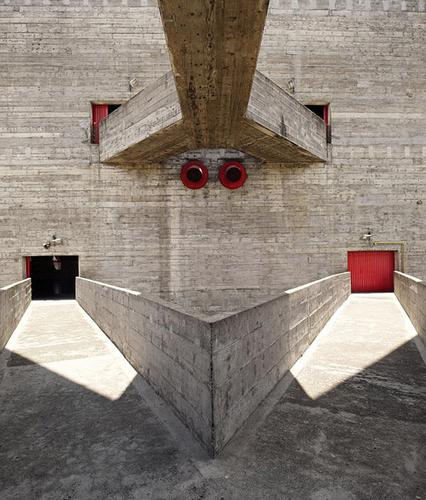1.Composition
Analysis of Architectural Photography Works
Architectural photography is a specialized genre that requires a keen eye for design, composition, and lighting. When analyzing architectural photography works, several key aspects can be considered:

The composition of an architectural photograph plays a crucial role in conveying the beauty and essence of the building. A well-composed photograph will have a strong sense of balance, leading lines, and framing that highlights the architectural features. Look for how the photographer has positioned the building within the frame and how they have used elements such as symmetry or asymmetry to create visual interest.
Lighting is another critical element in architectural photography. Natural light can enhance the textures and details of the building, while artificial light can create a dramatic effect. Pay attention to how the photographer has utilized light to illuminate the building and create shadows that add depth to the image. Consider the time of day the photograph was taken and how it has influenced the overall mood of the shot.
The perspective from which the building is photographed can greatly impact the viewer's perception. Different angles and viewpoints can emphasize certain architectural elements or create a sense of scale. Analyze how the photographer has chosen their perspective and whether it effectively showcases the building's design and character.
Architectural photography often focuses on capturing the intricate details and textures of a building. Look closely at how the photographer has highlighted elements such as materials, patterns, and surfaces. Consider the level of detail captured in the photograph and how it contributes to the overall aesthetic appeal of the image.
The context in which the building is situated can provide valuable information about its surroundings and purpose. Consider how the photographer has incorporated the environment into the composition and whether it enhances the narrative of the photograph. Look for elements that provide a sense of place and help situate the building within its larger context.
Post-processing techniques can significantly impact the final look of an architectural photograph. Pay attention to how the photographer has edited the image in terms of color, contrast, and sharpness. Consider whether the post-processing enhances the visual impact of the photograph or detracts from its authenticity.
By analyzing these key aspects of architectural photography works, you can gain a deeper appreciation for the artistry and skill involved in capturing buildings through the lens of a camera. Whether you are a photographer looking to improve your own architectural photography or an enthusiast seeking to understand and critique these works, paying attention to composition, lighting, perspective, detail, context, and post-processing can help you develop a more discerning eye and a greater understanding of this fascinating genre.
